Semester in Iberia & Morocco: Europe and Islam
Program Itinerary
Just reciting the names of the cities on this itinerary is enough to transport us: Seville, Cordoba, Granada, Gibraltar, Cadiz, Sintra, Lisbon, Evora, Fez, Rabat, Meknes, Marrakesh. These are some of the great historic cities of the Western Mediterranean, responsible for blending and creating the culture of Iberia and North Africa and, indirectly, the Americas
The program contains approximately 18 days of travel in Spain, Morocco and Portugal. Please look for more detail on the itinerary in late September 2006.
Days in Host City: 101
Days of In-Country Travel: 7
Days of International Travel: 11
Spain
Seville
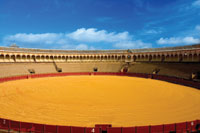
Seville is the artistic, cultural and financial center of southern Spain. It is the capital of Andalusia and an important port city through the ages. Seville came under Moorish control in the year 711, whic lasted for centuries, resulting in the magnificent Islamic architecture found in the older parts of the city, such as the famous Alcazar - the city's old Moorish palace, and the Giralda - the city's cathedral.
Cordoba
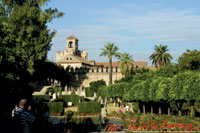
Cordoba is a modern city of moderate size, with a rich historic and cultural background. It was founded in ancient Roman times and in the tenth century was the largest city in the world. The Islamic influence on Cordoba can be felt especially in the old town, where the impressive architecure reflects the time when it was the capitalof the Caliphate of Cordoba, that governed almost all of the Iberian peninsula.
Granada
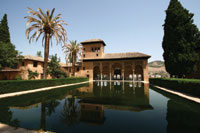
Granada is the capital of the province of Granada, in the autonomous region of Andalusia, Spain. The Alhambra, a famous Moorish citadel and palace, is in Granada. It is the most remarkable item of the Muslim, Jewish, and Christian historical legacy that makes Granada a hot spot among cultural and tourist cities in Spain.
Cadiz
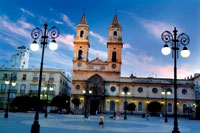
Cadiz is of typical Andalusian character. The old part of Cadiz, commonly referred to as the Old City, is shaped by the individuality of the various quarters, "El Populo," "La Viña," or "Santa Maria." These areas offer a marked contrast to the newer areas of town.
Gibraltar

Gibraltar is a British overseas territory. It is located on the south of the Iberian Peninsula, overlooking the Strait of Gibraltar which links the Atlantic Ocean to the Mediterranean Sea. The name of the Territory is a Spanish corruption of the original Arabic name Jabal at-Tariq, meaning "mountain of Tariq". It refers to the Berber Umayyad general Tariq ibn-Ziyad, who led the Moorish invasion of Iberia in 711.
Portugal
Lisbon
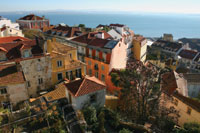
Lisbon is the capital and largest city of Portugal. The city of the seven hills, as it`s usually called, is one of the most picturesque capitals of Europe. In approximately 711 Lisbon was taken by the Moors, under whose rule the city flourished. The Moorish influence is still present in Lisbon. The azulejos (architectural tiles) that appear throughout the city are originally Muslim in style, and the word "azulejo" is derived from an Arabic word.
Sintra
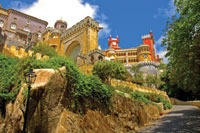
The municipality of Sintra is the second largest in Portugal by population, after Lisbon. The town is a UNESCO World Heritage Site on account of its 19th century Romantic architecture and is a major tourist attraction, with many day-trippers visiting from nearby Lisbon.
Evora
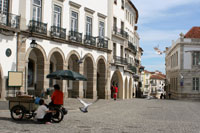
Evora is a municipality in Portugal and is the seat of the district of Evora and capital of the Alentejo region. The many monuments erected by major artists of each period now testify to Evora's lively cultural, artistic and historical past. The variety of architectural styles (Romanesque, Gothic, Manueline, Renaissance, Baroque), the palaces and the picturesque labirinth of squares and narrow streets of the city centre are all part of the rich heritage of this museum-city.
Morocco
Rabat
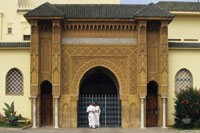
Rabat is the capital of the Kingdom of Morocco. Rabat played an important role in Muslim Spain, as in 1146, the Almohad ruler Abd al-Mumin turned Rabat's ribat into a full scale fortress to use as a launching point for attacks on Spain. Today, tourism and the presence of all foreign embassies in Morocco serve to make Rabat the second most important city in the country after Casablanca.
Marrakesh
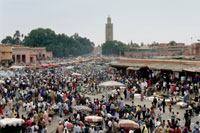
Marakesh, known as the "Red City or Al Hamra," is a city in southwestern Morocco in the foothills of the Atlas Mountains. Marrakesh has the largest traditional market (souk) in Morocco and also has the busiest square in the entire continent of Africa, called Djemaa el Fna.